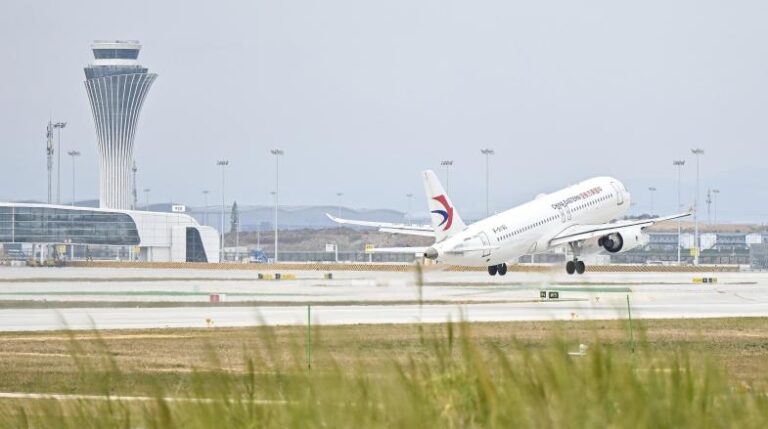Guangzhou Baiyun International Airport’s Terminal 3 was officially commissioned on October 30, moving the airport into an operational era dubbed “five runways and three terminals”.
On the afternoon of the launch, Baiyun Airport hosted an inaugural flight ceremony at Terminal 3, before the successful take-off of a Beijing-bound China Eastern Airlines flight.
The new terminal, which draws design inspiration from Guangzhou’s “Flower City” identity, marks a major step in the airport’s long-term expansion. With its commissioning, the terminal expands airport capacity and positions it to handle future growth in domestic and international traffic, and is expected to attract airlines to increase frequencies on popular routes.
Terminal 3 introduces several technology upgrades aimed at streamlining passenger processing. These include self-service and staff-assisted check-in options across 199 counters, 59 bag-drop units and 60 check-in kiosks. The terminal’s 21 dual-door verification gates can complete identity checks in as little as six seconds, with a reported misidentification rate below 0.1%. The terminal also features a “centralized security screening and RFID smart tray return” system, designed to improve throughput and reduce waiting times.
The Ground Transportation Center (GTC) adjacent to the terminal connects the airport with highway, railway and urban transit systems. Around 2,800 parking spaces will be made available, improving accessibility for travelers.
Guangzhou Baiyun Airport has also highlighted Terminal 3’s role as a showcase for ‘smart’ construction. The building is said to be China’s first large-scale hub terminal to employ building information modelling (BIM) process, enabling comprehensive management across all all personnel and sectors, across all stages of the terminal’s lifecycle.
It is also said to be the first terminal in the country to achieve fully paperless archives, with all building information stored in electronic data packages. This capability is said to provide precise data support for future operations, management and maintenance.
Baiyun Airport has been steadily rebuilding its international network, adding or resuming more than 30 overseas routes since the start of 2025. With T3 now in operation, the airport is targeting continued growth and an enhanced role within China’s “Air Silk Road” framework, linking the Greater Bay Area to destinations across Asia, Africa and Europe.
The opening of T3 is the culmination of the airport’s Phase III expansion project, intended to strengthen Baiyun’s position as a key aviation hub within the Guangdong-Hong Kong-Macao Greater Bay Area. By implementing smarter facilities, services with a human-centric focus and more efficient operations, the airport aspires to become a leader in the development of China’s civil aviation industry.
In related news, Perth Airport starts upgrade and expansion of Terminal 2

